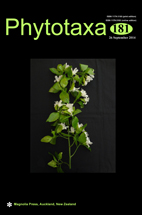Abstract
The thermal springs of Karlovy Vary (Carlsbad) is the locus classicus of the well-known thermal cyanobacterium Mastigocladus laminosus. In addition to the nominate variety, several other varieties and forms were described based on differences in morphology (true-branching versus non-branching) or ecology (thermal versus non-thermal). The cyanobacterial strain Kaštovský 1996/2, which was provisionally identified as M. laminosus f. nostocoides, was also isolated from this locality and discussed in previous work. Based on both morphological and molecular (SSU) analyses, this strain was found to not belong to Mastigocladus, but rather to an undescribed genus, presumably within the Nostocaceae. This strain was subsequently lost, and absence of type materials prevented the description of the genus. The species was successfully re-isolated in 2012. The new strain is identical in morphology, life cycle, and 16S rRNA sequence to the lost strain 1996/2. It is herein described as Cyanocohniella calida gen. et sp. nov. The genus differs from all other Nostocaceae and Aphanizomenonaceae by the unique combination of these characteristics: 1) thermal-tolerant ecology, 2) life cycle that includes Pseudanabaenaceae-like, Nostoc-like and Chlorogloeopsis-like stages, 3) absence of aerotopes, and 4) phylogenetic placement in the Aphanizomenonaceae. The sister taxa, based on 16S rRNA gene sequence phylogenetic analysis, are Cyanospira and Anabaenopsis, both spiral, planktonic, aerotope-bearing, tropical genera and species clearly distinct from C. calida.

